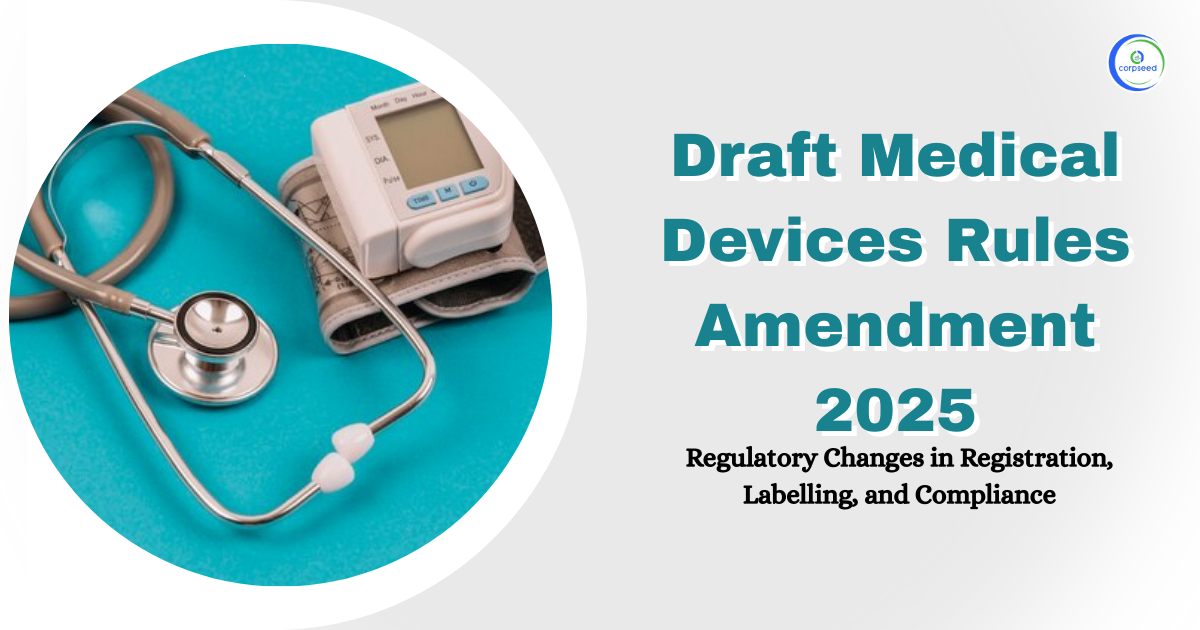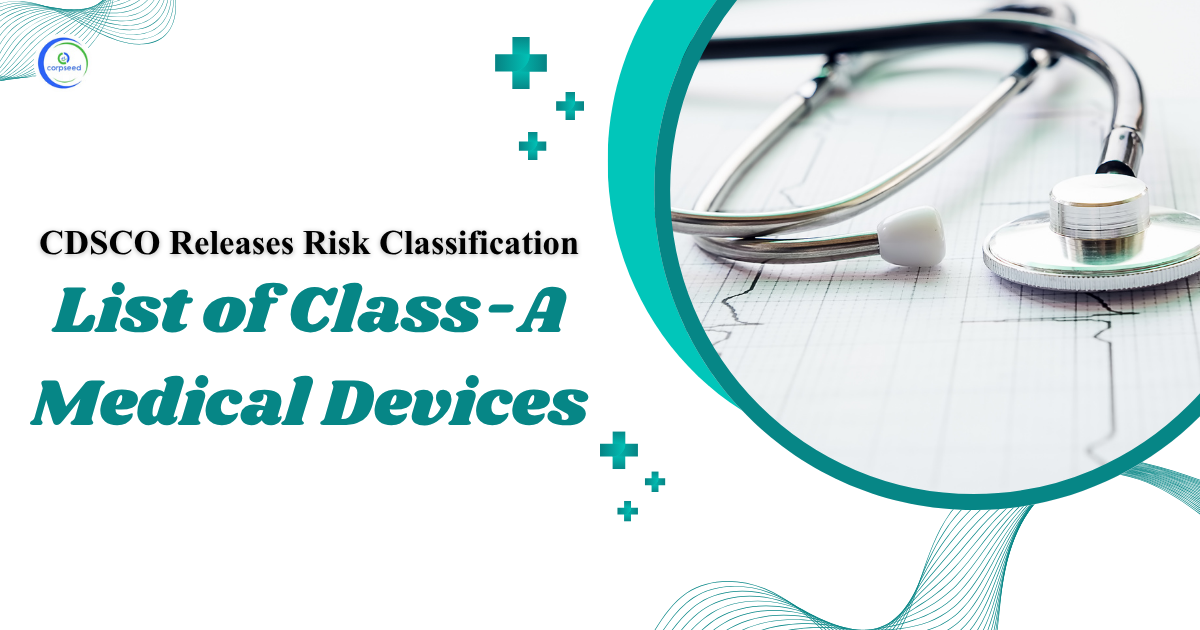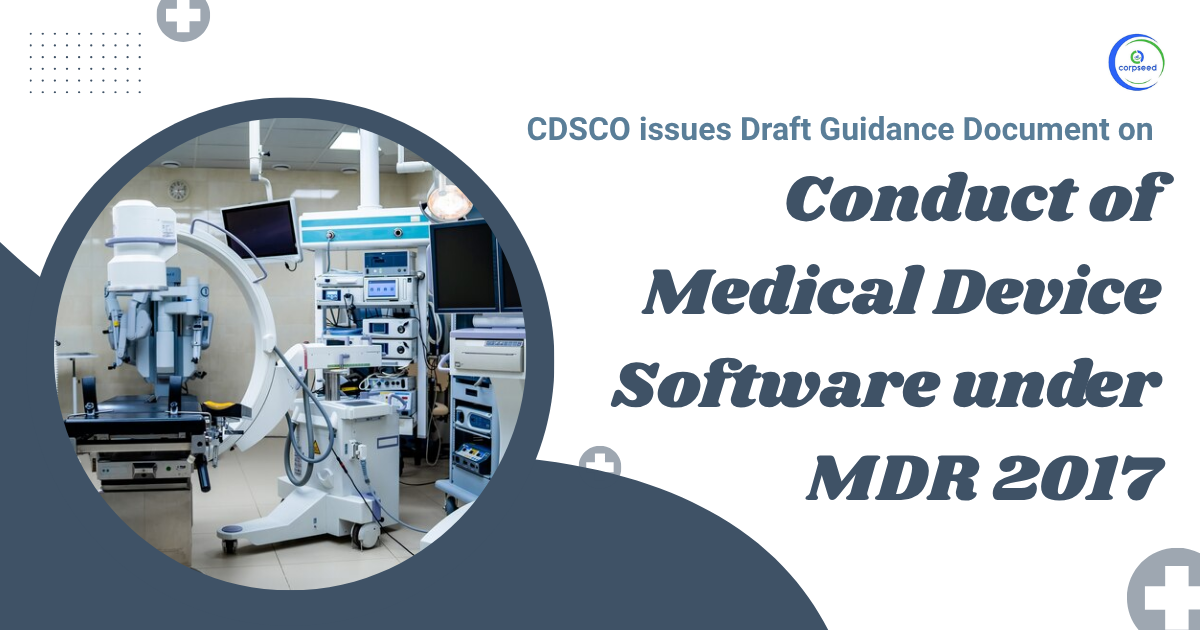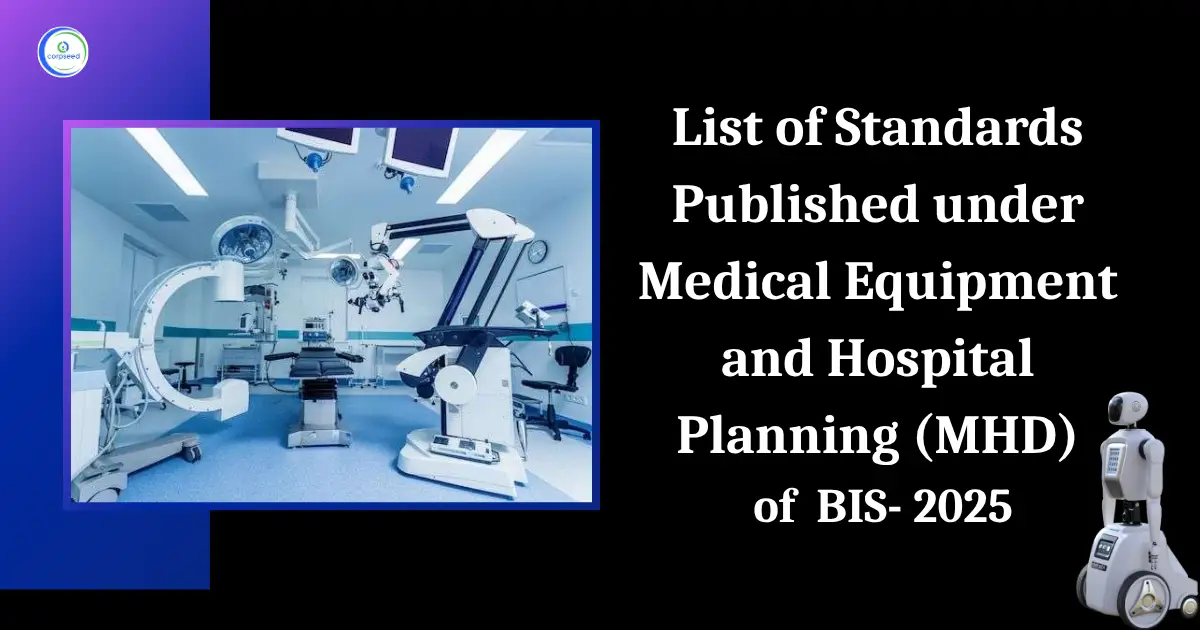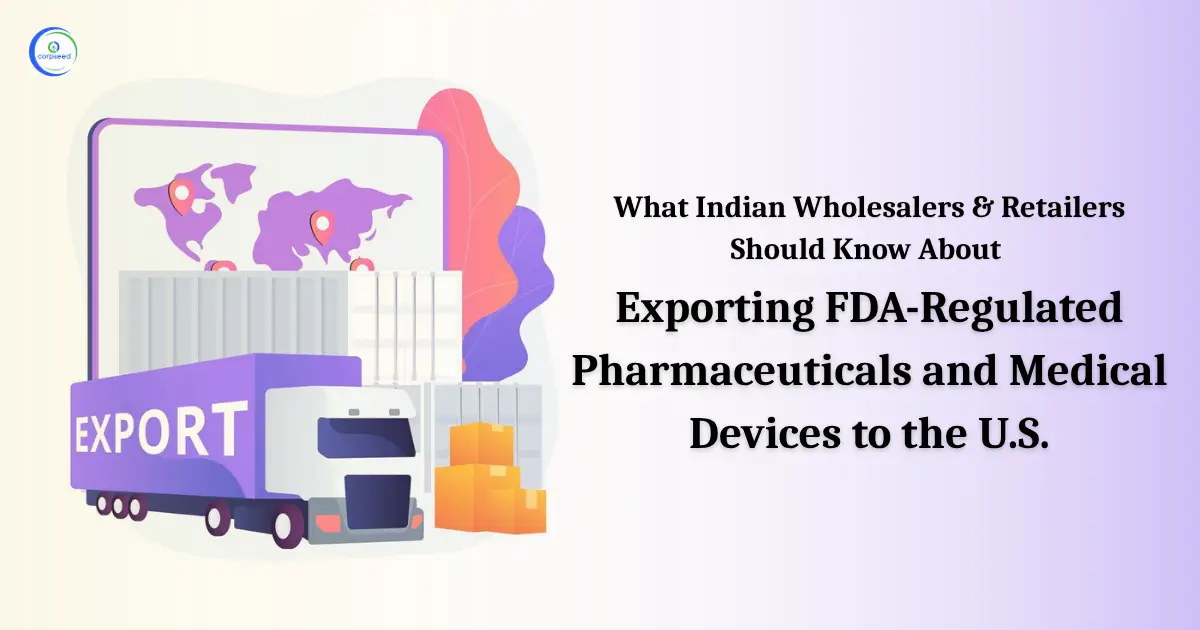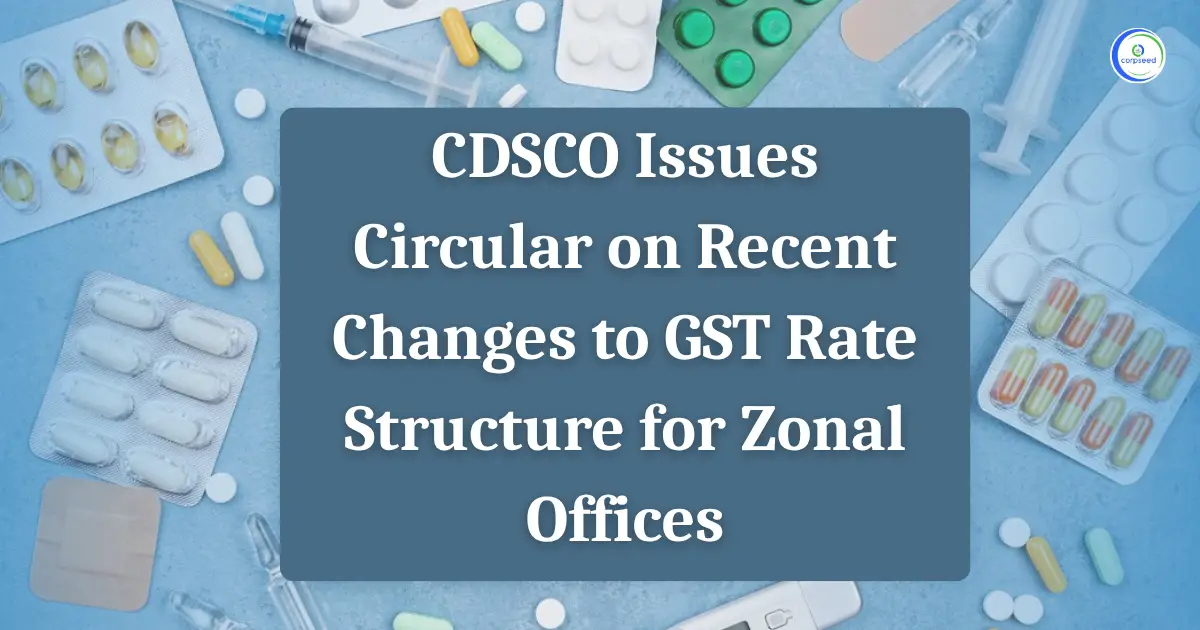A Brief Introduction of Personal Use
Personal protective equipment (PPE) - Wearing protective gear, including gloves, aprons, and/or gowns, and eye protection, is a crucial component of infection prevention and control for nurses and other healthcare workers. Effective assessment, knowledge of how different PPE types work in different clinical settings, and an appropriate application are all necessary for its use. Understanding the purpose of PPE can help nurses use it effectively, cut down on wasteful spending, and maintain the nurse-patient relationship as the foundation of care. This article describes PPE, its components, when it should be used, and how it should be utilized.
Table of Contents
- A Brief Introduction of Personal Use
- What is a Medical Device?
- Types of Medical Devices in India
- Eligibility Criteria for Medical Devices Registration/Import
- Process & Fee for Medical Devices Registration
- Documents required to be attached
- Time Involved &Validity for Registration
- Re-registration or Renewal of the Registration Certificate
- Post-Compliances After Receiving Registration
- How to Register Any New /Additional Medical Device If Medical Device Registration Obtained Already?
--------------Blog Contact Form-------------
From the 1st of October 2022, the said medical devices having risk classes A and B will be covered under the licensing regime of CDSCO. Once the devices are under the scope of the licensing regime of CDSCO, all the importers and manufacturers of the said devices will have to apply for the license in order to sell their products in Indian Market.
The Personal Use category consists of a total of 24 medical devices which are classified on the basis of their risk class and intended use. Out of which only class A and class B medical devices will fall under the licensing regime from 1 October 2022. The CDSCO listed medical devices are as below mentioned
| Personal Protective Equipment | |||
| S. No. | Medical Device Name | Intended Use | INDIA |
| 1 | Garment, Protective, For Incontinence | Intended to protect an incontinent patient's garment from the patient's excreta. | A |
| 2 | Biosanitizer for Medical devices | Intended for surface disinfection of medical devices, non-porous hard surfaces, medical equipment, and units, as well as in-depth cleaning of small surfaces. | B |
| 3 | Face shield | Intended to protect the wearer's entire face (or part of it) from hazards such as chemical splashes (in laboratories or in the industry), or potentially infectious materials (in medical and laboratory environments). | A |
| 4 | Particular respirator, | A disposable medical grade mask (respirator) is a safety device that covers the nose and mouth and helps protect the wearer from breathing in some hazardous or potentially infectious materials (in medical and laboratory environments). | A |
| 5 | Nitrile gloves | Nitrile gloves are intended to protect the patient and wearer and are required to use where resistance to chemicals, including certain disinfectants such as chlorine is required. Also intended for patients and wearers allergic to natural rubber. | B |
| 6 | Latex surgical glove | Natural rubber-based glove intended to protect the patient and wearer from cross infection when used in medical or dental surgery. | B |
| 7 | Non-latex surgical glove | Synthetic material gloves are intended to protect the patient and wearer from cross infection when used in medical or dental surgery. | B |
| 8 | Radiation protection gloves | A personal protection device that completely protects the hands of the operator and other personnel from unnecessary exposure to primary radiation and scattered radiation associated with diagnosis and therapeutic measures. | A |
| 9 | Partial hand radiation protector | A flat pad with straps or partial gloves that protect part of hands and fingers from unnecessary exposure to primary radiation and scattered radiation associated with diagnosis and therapeutic measures. | A |
| 10 | Radiation protection apron | A standard-length or half-length apron protects the patient, the operator, and other personnel from radiation exposure during a medical or dental procedure. Some have a fixed or removable collar to protect the neck and thyroid. | A |
| 11 | Radiation protection mitten | A personal protection device that protects the hands of the operator and other personnel from unnecessary exposure to primary radiation and scattered radiation associated with diagnosis and therapeutic measures. The mittens are also called mitts and protect the thumb and other fingers individually or together. | A |
| 12 | Radiation protection goggles | A personal protection device that protects the eyes of the operator and other personnel from unnecessary exposure to primary radiation and scattered radiation associated with medical/dental procedures for diagnosis and treatment. | A |
| 13 | Radiation face protector | A transparent or opaque personal protection device that protects the face and eyes of medical personnel and other personnel from unnecessary exposure to primary radiation and scattered radiation associated with diagnosis and treatment. | A |
| 14 | Operator radiation protection spectacles | A personal protection device that protects the eyes of the operator and other personnel from unnecessary exposure to primary radiation and scattered radiation associated with diagnosis and treatment. The device comes in non-correction (non-prescription) glasses and visual acuity correction (prescription) glasses. | A |
| 15 | Gonadal radiation protector | A personal protection device that attenuates unnecessary radiation exposure in diagnostic, medical, or dental procedures, and shields the gonad of the patient and the operator. | A |
| 16 | Radiation protection blanket | A personal protection device that protects specific body parts of the patient, operator, and other personnel from unnecessary radiation exposure in medical/dental procedures for diagnosis and treatment. | A |
| 17 | Radiation protection collar | A personal protection device that protects the neck or thyroid of the patient, the operator, and other personnel from unnecessary radiation exposure in medical/dental procedures for diagnosis and treatment. | A |
| 18 | Radiation protection cap | A personal protection device that protects the head of the operator and other personnel from unnecessary exposure to primary radiation and scattered radiation associated with medical procedures for diagnosis and treatment. | A |
| 19 | Mobile radiation protection barrier | A stand-alone, movable barrier that protects the operator, etc. from unnecessary exposure to the radiation used for medical diagnosis, treatment, and dental procedures. | A |
| 20 | Non-latex medical examination glove | Gloves are made of synthetic materials and used to protect the patient and users from cross infection during the examination, check-up, treatment, and handling of contaminated medical materials except for surgery. | A |
| 21 | Latex medical examination glove | Natural rubber gloves are used to protect the patient and users from cross infection during examination, check-up, treatment, and handling of contaminated medical materials except for surgery. |
A |
| 22 | Chemotherapy spill clean-up kit | Designed to safely clean and dispose of Chemotherapy drug spills. | B |
| 23 | Gown/Coveral | Intended to cover the full body act as impermeable to blood and body fluids and ensure a high level of protection from biological/infectious agents | A |
| 24 | Medical/Cadaver Body Bags | Intended for transporting a human corpse without any spread of biohazard/infectious agent. | B |
Central Drugs Standard Control Organisation:
India is growing as one of the nation's leading pharmaceutical businesses and is among the top ten nations in terms of the pharmaceutical industry. Several factors such as a large population, growing health awareness, affordable medical facilities, and better research facilities have given rise to the manufacturing and development of pharma business in India. However, with the increasing scope for the growth of the pharma industry in India, there are possibilities for the sale/purchase of medical equipment & device illegally or without jurisdiction. Therefore, the Government of India has established the Central Drug Standards Control Organization (CDSCO), which is the primary legislative body and has been responsible for the regulation, control, and management of pharmaceuticals and medical devices in India apart from the appointment of the Drug Controller General of India (DCGI), and has conferred the responsibility of undertaking assessment, approval and regulation of further compliances(import, export, sale, distribution) in the matters of medicinal drugs and medical devices(including any existing or any new) drugs/devices in accordance with the provisions of the Drugs and Cosmetics Act 1940.

What is a Medical Device?
According to the latest definition as provided under the Medical Devices Amendment rules 2020, as notified on 11.02.2020. However, taking care of circumstances the government has exercised its powers to include more categories by widening the scope of the definition of “Medical Device” under the Act. It states-
"Devices used in general medical practice such as medical apparatus, instruments, implants appliance, etc., which are either used individually or in combination, and are intended to be specifically applied for human beings or animals and are further intended to obtain the desired function by such means and for such purposes as provided below, but is not intended to meet the primary intended action on human body or animals by any pharmacological or immunological or metabolic means-
- Analysis, prevention, observing, treatment, or mitigation of any disease or disorder;
- Analysis, observing, treatment, mitigation, or support for any injury or disability;
- Examination, replacement or alteration, or support in findings of the anatomy or a physiological process;
- For supporting or sustaining life;
- Decontamination of medical devices; and
- Conception-related equipment & devices.
Therefore, every manufacturer or importer or both of any medical devices in India shall be required to obtain registration as per the provisions of the Drugs and Cosmetics Act 1940. Any failure to comply with the same may invite legal action including penalty & prosecution under the Act.
Types of Medical Devices in India
Provisions related to the import, manufacture, sale & distribution of medical devices are regulated under the provisions of the drug and cosmetics Act 1945. Under the New Medical Rules 2017, all medical devices have been classified into four different categories depending on their usability & risk involved as provided below.
- Class A:- Low-risk devices like a thermometer, tongue depressors, etc.
- Class B:- Low moderate risk like Hypodermic Needles, suction equipment, etc.
- Class C:- Moderate high-risk devices like Lung ventilators, etc.
- Class D:- High-risk devices like Heart valves, implantable devices, etc.
Where Class A & B medical devices are considered to be less risky and moderate devices, for which the application to manufacture has to be filed to the State Licensing Authority. Whereas Class C and D medical devices are considered to be high and very High-risk devices and the application for these has to be filed to the Central Licensing Authority of India.
Eligibility Criteria for Medical Devices Registration/Import
The provisions related to activities such as Import, manufacture, sale and distribution of medical devices have been regulated under the provisions of the Drugs & Cosmetic Act 1940 & Rules 1945. Therefore, any person/firm/enterprise, etc. holding a wholesale drug license and/or manufacturing license issued under the Drugs and Cosmetics Act, 1940 and Rules 1945 could make an application for Registration and import of medical devices into India.
Process & Fee for Medical Devices Registration
Types of Medical Devices Registration
- Registration/Import of any existing medical device;
- Registration /import of any new medical device
Step 1: Determine Whether Your Medical Device is Under Notified List or Not
The CDSCO authority has provided a list of notified medical devices that need to compulsorily obtain registration under the Drugs and Cosmetics Act 1940 and in accordance with Medical devices rules 2017. However, there may be any medical devices that have not been expressly notified by the CDSCO authority, or in the case of new medical equipment, the manufacturer/importer shall be required to obtain a NOC in such cases. For instance, Blood Grouping Sera Ligatures, Sutures, Staples Intra-Uterine Devices (Cu-T), Condoms, Tubal Rings, Surgical Dressing, Umbilical Tapes, Blood / Blood Component Bags do not need registration, whereas devices such as spinal needles, cochlear implants, syringes, and needles, heart valves, endotracheal tubes and catheters among others should undergo registration provides with the CDSCO.
Step 2: Appoint an Authorized representative (in case of Foreign Entity)
For a foreign business manufacturer entity, it shall be necessary to appoint an authorized business entity in India, who shall be the contact person for the inspection authorities during the process, assist in device approvals, registrations process, and vigilance adverse event reporting. The Indian Authorization should hold a wholesale drug license in forms 20B& 21B.
Step 3: Fill out the application form for Medical Device Registration
In the next step, the manufacturer/importer for MD shall be required to submit the registration form of a regulatory dossier, along with all the prescribed documents along with the prescribed fee on the CDSCO portal to the DGCI (Drugs Controller General of India) by logging on to the online CDSCO portal https://cdsco.gov.in/opencms/opencms/en/Home/ and signing into the portal.
Following forms along with applicable govt. fees have been provided below, which shall be required to be paid through payment challan-
| Applicant Type | Class of MD | Application Form | License Form |
| Importer | A,B,C,D | MD-14 | MD-15 |
| Manufacturer | A B | MD-3 | MD-5 |
| Manufacturer(Loan License) | A B | MD-4 | MD-6 |
| Manufacturer | C, D | MD-7 | MD-9 |
| Manufacturer(Loan License) | C, D | MD-8 | MD-10 |
However, in the case of new equipment or medical device-
| Application Type | Class of MD | Application Form | License Form |
| Importer Clinical Investigation | A,B,C,D | MD-22 | MD-23 |
| Import License | A,B,C,D | MD-26 | MD-27 |
| Test License(for importer) | A,B,C,D | MD-16 | MD-17 |
| Manufacturer (Clinical investigation) | A,B,C,D | MD-22 | MD-23 |
| Manufacturer License | A,B,C,D | MD-26 | MD-27 |
| Test License | A,B,C,D | MD-16 | MD-17 |
Further, each application shall be supported with the list of documents and the requisite fee as provided in the online portal of CDSCO-
| Type of License | Class of Device | Applicable Regulation | Govt. Fee |
| For Manufacturing/Loan License For one site For each device |
A or B; | 20(2) | Rs. 5000 Rs. 500 |
| For Manufacturing/Loan License For one site For each device |
C or D; | 21(2) | Rs. 50,000 Rs. 500 |
| For Import License(other than IVD) For one site For each device |
Class A | 34(2) | 1000 Dollar 50 Dollar |
| Import License(other than IVD) For one site For each device |
Class B | 34(2) | 2000 Dollar 1000 Dollar |
| Import License (in IVD) For one site For each device |
Class A or B | 34(2) | Rs. 1000 Rs. 10 |
| Import License (other than IVD) For one site For each device |
Class C or D | 34(2) | 3000 Dollar 1500 Dollar |
| Import License(in IVD) For one site For each device |
C or D | 34(2) | 3000 Dollar 500 Dollar |
Step 4: Obtain Certificate of Registration in Prescribed form
Once the application is submitted on the CDSCO portal, the DGCI registration authority may send a query through an inquiry letter to the manufacturer or from the authorized representative of the importer, along with the timeline within which the query should be answered, and sometimes, may also ask for a technical presentation On satisfaction the authority may issue a license in such form as provided in the above list. After obtaining registration, the manufacturer or his authorized representative may apply for an importer license.
Documents required to be attached
- Form 40
- ISO 13485 certificate
- Full Quality Assurance Certificate
- CE Design Certificate
- Undertaking that all information provided is authentic
- Either a Free Sale Certificate or Certificate from the Foreign Government
- Certificate of Marketability from GHTF (Australia, Canada, Japan, the European Union, and the United States);
- Plant Master Report
- Device Master File
Time Involved &Validity for Registration
If the DGCI doesn’t ask for a Technical Presentation or Subject Expert Committee (SEC) audit, it takes around 6-9 months to obtain a Medical Devices Registration. In cases where Technical Presentation or Subject Expert Committee (SEC) audit, is required, it may take additional 3-6 months.
Once obtained the Registration Certificate shall be valid for a total period of 3 years from the date of issue of registration unless suspended or canceled by the DGCI authority for proper causes.
Re-registration or Renewal of the Registration Certificate
The application for renewal of the MD registration certificate shall be made at least nine months from the expiry of the registration certificate. Though there are no additional requirements for the renewal of registration, it shall be necessary for the certificate holder to provide a copy of the Plant Master File (PMF) and Device Master File (DMF), where there are no changes in the PMF and DMF,
Post-Compliances After Receiving Registration
Though there are not many compliances in place about the registration certificate, it shall be compulsory for the certificate holder to-
- In case of any change that has taken place about the constitution of the firm and/or address of the registered office/factory premises, the MD manufacturer/authorized representative of the importer to intimate the licensing authority regarding the same in writing;
- In case any such change has taken place, the existing registration certificate shall be valid for a maximum period of three months from the date on which the change has taken place, and during this time, the manufacturer/authorized representative shall be required to obtain a fresh Registration Certificate;
How to Register Any New /Additional Medical Device If Medical Device Registration Obtained Already?
In case an importer wants to obtain registration for manufacturing of any additional manufacturing device, then such person shall be required to obtain an endorsement to the existing Registration Certificate along with the prescribed documents holding that manufacturing of an additional device is being undertaken in the manufacturing site as provided in the registration certificate along with a fee of 1000 dollars fee for each additional device.
Drug License
A drug license is an official permission granted to individuals or companies that manufacture, distribute, and sell drugs in India. It ensures adherence to the safety and quality standards of the regulatory authorities that ensure public health.
Medical Devices Import/Manufacturing
CDSCO online registration is a process that ensures that all the drugs, medical devices, and cosmetics in the market are safe, reliable, and must have passed quality standards. Importers, manufacturers, and others must register under the CDSCO for a certificate if they are working in this field.
Medical Devices Import
The CDSCO is responsible for medical device registration in India. This registration guarantees that all devices are safe, of high quality, and comply with regulatory standards. This registration not only protects patients but also supports global trade.
This portion of the site is for informational purposes only. The content is not legal advice. The statements and opinions are the expression of author, not corpseed, and have not been evaluated by corpseed for accuracy, completeness, or changes in the law.
BOOK A FREE CONSULTATION
Get help from an experienced legal adviser. Schedule your consultation at a time that works for you and it's absolutely FREE.




